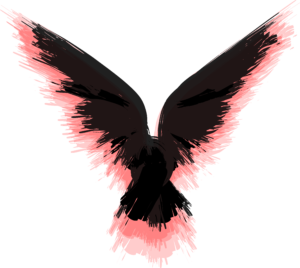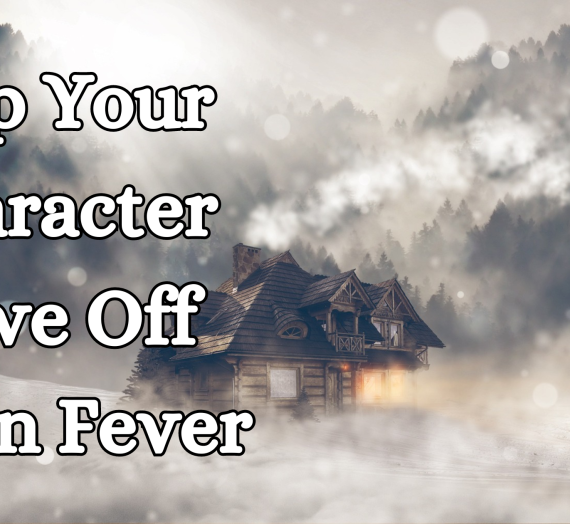What happens when your character gets overheated? What are the signs and symptoms of heat-related illnesses? What are heat-related illnesses? How can this affect your story? Find out on this episode.
Let me start by adding a disclaimer. I am, in no way, shape, form, or fashion, a doctor or medical person. This is not medical or treatment advice, and I am not telling you what to do or not to do. This is solely for the purpose of inspiring ideas for writing about burns in a fiction story and nothing else.
Today we are talking about heat-related illnesses. These types of illnesses happen as a result of the body having a hard time regulating its internal temperature during hot weather or in hot humid environments such as a sauna. When this happens, and the body temperature starts to rise, it is called hyperthermia. I did not know that and had to read it a few times to realize they didn’t have an error, but one letter was changed from hypothermia.
Fevers are not part of this category, but if a person already had a fever before going into the heat, it could make things worse, and these things could happen to them also.
Also, as of 2023, there are approximately 170,000 work-related heat injuries and illnesses per year in the USA. I assume this is mostly from road workers, construction workers, landscapers, and other outside jobs. Still, it could be from inside jobs that require working in heated environments.
There are three types of illnesses that fall under hyperthermia: heat cramps, heat exhaustion, and heat stroke.
Heat cramps are defined as painful muscle cramps or spasms that happen due to heat salt loss due to sweating. They are normally more intense and last longer than a typical nighttime muscles cramp. These are most common in young children that have been running around in the sun on a hot day.
Commons signs are
* heavy sweating
* cool and clammy skin
* cramps in the legs, back, abdomen, or arms
* muscle cramps
* muscle spasms
Treatments for this are to move to shade or other cool place. Remove extra clothing. Give drinks to rehydrate them. Cool beverages are best. If writing modern stories, drinks with electrolytes are best. Remember never to give alcohol or caffeine to the character suffering heat illnesses as they will dehydrate and make everything worse! Stretch the cramped muscles slowly. Massaging the muscles might help, especially for children. The person should rest for a few hours before doing anything in the sun or any work.
Heat exhaustion is defined as the body’s core temperature reaching between 100.4 degrees Fahrenheit and 104 degrees Fahrenheit because of extreme heat and excessive water and salt lost from the body without replenishing the lost liquid from sweat fast enough.
Signs of heat exhaustion are
* heavy sweating
* a core temperature of 100.4 degrees Fahrenheit to 104 degrees Fahrenheit
* muscle cramps
* weakness
* cool, pale, clammy skin
* dizziness
* lightheadedness
* nausea or vomiting
* headache
* fatigue
* fast, weak pulse
* thirst
* irritability
* anxiety
Treatments for heat exhaustion are moving to a cool place, or at least to the shade. Remove excess clothing. Offer as much to drink as they can handle. Sports drinks in modern times or water with a pinch of salt in stories that are from other eras. This is to help replenish the lost salt. The character will need to be cooled. Place cold packs or other cold items on the neck, under the armpits, and between the legs on the thighs. This is where the body’s main arteries are, and it will cool the character faster. Making their shirt wet and fanning them will help. They will need to rest for at least the rest of the day.
Heat stroke is defined as when the body loses the ability to control the internal temperature and it reaches 105+ degrees Fahrenheit. This is the stage where things can quickly turn deadly. At this heat, the body’s internal thermometer will stop working, and the body’s core temperature can quickly spike to 110 degrees Fahrenheit.
Signs of heat stroke are
* temperatures over 104 degrees Fahrenheit
* warm, dry skin
* rapid heart rate
* throbbing headache
* nausea
* vomiting
* fatigue
* confusion
* dizziness
* agitation
* lethargy
* stupor
* fainting
* seizures
* loss of conciseness
* coma
* death
The treatment for heat stroke is to do all of the first aid for heat exhaustion. Remember, do not give drinks to characters that are not conscious or are in an altered mental state. If in modern times, call 911. Ice can be used on the neck, thighs, groins, and armpits. If in a historical setting, placing them in a cool stream could be helpful, but your character will have to be careful because if they faint in the water, they might drown. Also, the patient might be in shock and will need to be treated for that also.
Heat stroke can have long-term effects on the body. Your character could experience, but doesn’t have to, brain, kidney, liver, or muscle damage, immune system damage, and are more likely to develop heart or liver disease later in life. The increased body temperature could cause organs to swell and be permanently damaged.
Heat exhaustion and heat stroke are serious health issues and must be taken seriously. I can tell you from personally having dealt with both of these, it will forever affect the person’s heat tolerance. This is because these can permanently damage the body’s thermoregulation, causing heat intolerance. That doesn’t mean it has to happen, only that I have never met a person who had a heat stroke and didn’t have this issue.
Remember that with body temperatures rising from hot situations, victims do not react to medications for fevers the same way as it would for a fever. Medicines for this do little to no good because they are made for viral and bacterial infections, not hot situations.
Some medical documents consider heat rash a heat-related illness, while others do not. I personally feel it is more of a symptom since it doesn’t have to do with the core body heat and is more about the body’s reaction to sweat, but that is just my personal opinion. Since it is talked about, I’ll cover it here.
Heat rash, also known as prickly heat, is a rash that forms because of trapped sweat on the skin that results in irritated bumps forming on the skin. This can range from small bumps to blisters or even large inflamed lumps, AKA hives. These often appear on the neck, upper chest, folds of the arms, or in children, along the diaper line. Some forms of heat rash are very itchy.
Treatment for heat rash is to cool the skin and keep it dry. Also, try to move out of humid climates, but that might not be an option in all stories. Once the skin is cooled and dry, mild heat rash will get better very quickly. It could be gone within an hour.
The best thing to do is to prevent heat-related illnesses before they happen. This can be done by drinking plenty of water or other hydrating drinks, wearing light clothing, scheduling work so your character is not out in the hottest part of the day, taking plenty of breaks, using sunscreen. If writing historical, mud was often used as sunscreen and bug repellant. If in modern times, stay inside in the air conditioning. If there is no air conditioning, they can cool down in the root cellar, cave, or could use a fan. Check on other characters in hot weather, especially the elderly and young children or those who are pregnant. Other things can be done and are done in different climates. Research the region and biome of the place or type of place you are writing.
Interesting fact: The highest body temperature ever recorded in a human was recorded in 1980 in a 51-year-old male who had a heat stroke. His temperature was recorded at 115.7 degrees Fahrenheit.
What could possibly go wrong:
Likely to go wrong: Your character is out in the sun too long and starts to feel nauseous.
Likely to go wrong: Your character has heat rash, and it itches like crazy.
Possible to go wrong: Your character could be suffering from heat exhaustion and they faint. Maybe this is in front of their crush in a romance, or maybe it is in the middle of a jungle all alone for suspense. The options are endless.
Possible to go wrong: Your character tries to rehydrate with an alcoholic drink or a caffeinated drink. Both of these are likely to make things worse as they can dehydrate and will not rehydrate them.
Unlikely to go wrong: Your character tries to take over-the-counter medicine for a fever for heat exhaustion or heat stroke. It doesn’t help, and things get worse. This could lead to death if they don’t do something else.
Unlikely to go wrong: Your character could be suffering from heat exhaustion, and as their heart rate spikes, it causes a heart attack. This could be deadly.
Improbable but technically still in the realm of possibilities: Your character could have a heat stroke and be left with permanent brain damage.
Improbable but technically still in the realm of possibilities: Your character goes to a river or stream to cool off during a heat stroke, and they faint in the water. This could cause them to drown.
Helpful Links to learn more:
Heat Illnesses:



